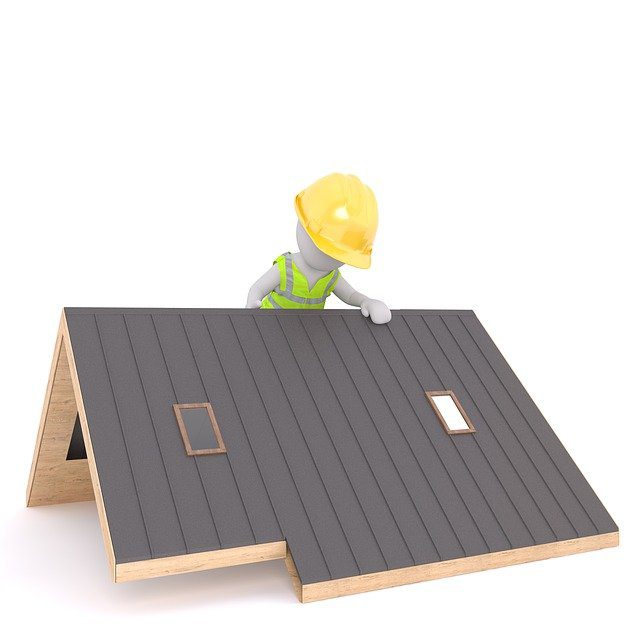
Many of our clients have asked us, "How can you tell the difference between TPO and EPDM roofing? We'll compare and contrast two of the most popular single-ply roofing systems, TPO and EPDM, and discuss the advantages and disadvantages of each.
Known as "single-ply" membranes, these thin layers of protection can be chemically attached to insulation or ballasted to provide a weatherproof surface for your business.
To begin, know that TPO and EPDM are the two most common forms of single-ply roofing membranes. TPO and EPDM are both membranes laid on top of the insulation, but there are important distinctions between the two that might impact your building.
Sheets of rubber or synthetics can be ballasted or chemically bonded to insulation to form a protective layer of a single-ply membrane roof for a commercial building. Flat or almost flat roofs, such as those seen on most commercial buildings, are perfect for single-ply membrane roofing.
Regarding roofing, single-ply membranes may be broken down into three categories. EPDM, TPO, and PVC are the three most common types. All materials have their advantages and disadvantages. We'll go through the strengths and limitations of TPO and EPDM so you can make a selection.
Thermoplastic polyolefin (TPO) has become one of the most popular choices for commercial roofs. It is a single layer of synthetics and reinforcing scrim, and it may be used to cover level and semi-flat roofs.
TPO is not plastic as the name would have you believe; rather, it is a form of rubber that is often made from a combination of polypropylene and ethylene-propylene.
In comparison to EPDM and other varieties of rolled rubber roofing, TPO has the lowest material cost for single-ply membrane roofs. The added benefit of the hue is the next thing to mention. The top side of TPO is often white, which helps reflect sunlight and prevent heat accumulation within the structure.
Another advantage of the TPO membrane is its flexibility in terms of installation. It can adhere to the roof, or it can be bolted down. In addition, it may be heat welded around chimneys and other protrusions.
Last but not least, TPO may be broken down by a wide variety of materials but not by corrosion. It does not support the development of mildew or algae and may be cleaned without the use of pressure. These characteristics make the material even less of a hassle during the routine maintenance checks that are recommended once a year.
EPDM, which stands for ethylene propylene diene monomer, is more popularly known as a "rubber roof" due to its combined monomers (chemicals). It is commonly seen on the flat or low-slope roofs of commercial structures. It is also common on carports and patio covers in private homes.
Because EPDM comes in huge sheets or rolls, it can be installed rapidly and with minimal effort. When compared to other roofing materials, EDPM has a lower cost of installation, which is a major plus. EPDM is one of the cheapest roofing materials available, costing only around $0.80 per square foot.
Considering the low weight of EPDM roofing, the roof deck doesn't need to be reinforced. In fact, removing the existing roofing materials, using an adhesive, and then rolling out the EPDM membrane is a common method for installing the membrane quickly. As long as the installer follows the manufacturer's guidelines, excellent quality EPDM can survive for 20 years or more without leaking at the seams.
The method of installation is up to the contractor. The material may be affixed to the roof with adhesive, and fasteners can be used to secure it in inaccessible spots. Stone ballasting can also be used to enhance the structure's visual appeal. Learn more about bonding EPDM to EPDM by reading our blog!
Pros
Cons
Pros
Cons

Roofing systems vary in their suitability for various climates and weather conditions, so it's important to take into account things like your location and whether or not you plan to install solar panels on the roof before making a final decision.
Cost, lifespan, durability, maintenance, simplicity of installation, and energy efficiency are further crucial concerns. Both can be mechanically affixed, which is helpful for installations in colder climates in the Midwest, or completely adhered, which is the preferred method because of its superior longevity and warranty coverage.
Cost
EPDM roofs are your best option among single-ply roofing membranes for the best value. The cost of a TPO roofing membrane is higher than that of an EPDM one. Spending extra money on a thicker membrane is a better investment regardless of the type of membrane you pick. EPDM and TPO membranes benefit from the increased thickness in both performance and durability.
Longevity
How the overlapping seams of a single-ply roofing membrane are joined together is the most crucial factor in determining the membrane's durability. The best option is permanently bonded seams; an incorrect connection is the root cause of nearly all leaks.
A few factors make it hard to predict how long a TPO roofing membrane will last. First, there are no TPO membranes in the United States that are older than 15 years, as this is a relatively new roofing product. For another, TPO membranes are still considered a prototype.
Considering that all of these formulas are only in their second, third, or even fourth generation, it is impossible to predict how long they will persist. Additionally, there have been instances of the seam and material failures that led to the recall of certain TPO products.
Durability
The longevity of an EPDM roof is well-known. EPDM roofs, which are constructed from a rubber composite, have been available to homeowners for quite some time.
The durability of up to 25 years is possible with an EPDM roof installed with tapered seams and thorough flashings. It's a reliable roofing material since it can withstand the sun's rays, the ozone layer, oxidants, and even a tornado. EPDM membranes also outperform TPO ones in cooler environments.
TPO glue and tape seams are designed to be as long-lasting as EPDM but have a strength that is three to four times greater. However, various TPO membranes work differently due to constant adjustments and refinements to the composition. TPO has a low resistance to high thermal and solar overload. Therefore, it easily splits and fractures if water pools on it.
Maintenance
EPDM membranes, when put correctly, need minimal upkeep early in their service lives. In contrast to a TPO, the seams of an EPDM are coated with an adhesive, leaving them susceptible to eventual separation.
In the long run, this implies that an EPDM roof will need regular maintenance in order to avoid damage. EPDM is extremely insensitive to oils and solvents of any type. Cleaning products using petroleum solvents, abrasive cleaners, or citric-based cleaners should be avoided since they can damage an EPDM membrane beyond repair.
Compared to EPDM roofing membranes, TPO membranes require more upkeep. As compounds age, they lose their malleability and, thus, their thermoplastic properties, making it difficult to fuse fresh materials to a TPO membrane. Therefore, an activator may be needed to successfully heat fresh weld material to an existing membrane in order to seal repairs.
Ease of installation
Compared to TPO roofing membranes, EPDM rubber roofs may be installed more quickly and with less effort. EPDM may be installed using standard tools, but TPO must be welded using hot air. Therefore, installing a TPO roofing membrane is more difficult, expensive, and requires expert skills.
A novice roofer may probably handle installing an EPDM membrane, but a TPO roof requires the expertise of a seasoned professional. Leaks caused by the improper installation are expensive to fix or replace.
Energy efficiency
TPO membranes, which are one type of single-ply roofing, have been growing in popularity due to their high level of energy efficiency. While "cool" roofing technology typically refers to white TPO membranes, other hues of TPO are also designed to reflect sunlight.
For businesses in warmer areas, a TPO roof means lower cooling expenditures. A TPO roof helps keep the inside cooler and lessen the load on the air conditioner by reflecting the sun's rays. TPO roofs are becoming popular in areas with a lot of hot, sunny days because of their effectiveness in conserving energy.
While white EPDM roofing membranes have superior reflective characteristics to darker EPDM, they still can't compare to the savings of a thermoplastic polyolefin (TPO) roof.
Will you be putting in a TPO roof? And what about an EPDM roof? We're here to lend a hand and would be glad to do so. The experts at Modern Exteriors would be pleased to provide your family with a free estimate. Both roof replacement and maintenance can be done. Modern Exterior guarantees to provide effective answers for each issue.
After 20-25 years, an EPDM roof will need to be replaced or restored. A leak in a TPO roof, like any other type of roof, is often due to the seams between individual panels separating. A silicone restoration system may be used to repair an EPDM roof. However, a primer is required before the system is applied.
It is necessary to use a primer to ensure appropriate adhesion of the silicone to the black film that remains on an EPDM roof after cleaning. In a positive turn of events, the priming may be sprayed on and power washed off in about 15 minutes.
Some EPDM roofs are ballasted with loose gravel as an alternative to TPO. There are two ways to repair a ballasted EPDM roof:
1. Having the EPDM roof affixed mechanically is the first choice. Nothing is tethering the rubber to the ground anymore because the prior EPDM was ballasted. To prepare the roof for spray foam roofing, a roofer would remove the gravel, cut the flashings, and cover the roof field with the cover board.
2. The other strategy is taking off the gravel, washing the left EPDM roof, and securing a silicone repair membrane system.
The decision to fix your TPO roof or replace it entirely with a new system will need to be made after about 15 to 20 years. Water seeping into a structure indicates that the roof needs attention. Most leaks in a TPO roof occur because the joints have come loose, enabling water to seep into the attic space below.
To repair a TPO roof, you only need a silicone restoration solution if the saturation level is below 25% and the remainder of the seams are in good shape.
Priming a TPO roof that is older than five years is usually unnecessary. This is since the oily layer that first forms on brand new TPO will have worn off. Silicone won't stick to TPO well if there's still an oily layer on it. If your TPO roof is more than 25% saturated, you should remove the TPO and insulation and replace the roof entirely.